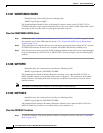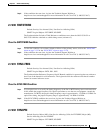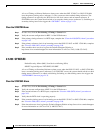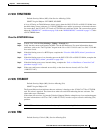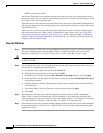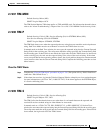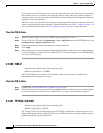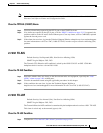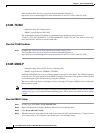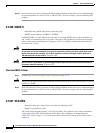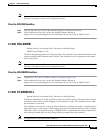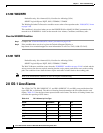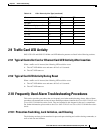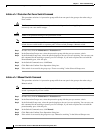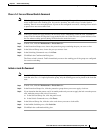
2-142
Cisco ONS 15310-CL and Cisco ONS 15310-MA Troubleshooting Guide, R7.0
Chapter 2 Alarm Troubleshooting
2.7.244 TX-RAI
If the condition does not clear, log into the Technical Support Website at
http://www.cisco.com/techsupport for more information or call Cisco TAC (1 800 553-2447).
2.7.244 TX-RAI
Default Severity: Not Alarmed (NA)
SONET Logical Objects: DS1, DS3
The Transmit Direction RAI condition is transmitted by the backplane when it receives a
15310-CL-CTX, DS1-28/DS3-EC1-3, or DS1-84/DS3-EC1-3 DS-1 TX-AIS. This alarm is raised only
at the transmit side, but RAI is raised at both ends.
Clear the TX-RAI Condition
Step 1 Complete the “Clear the TX-AIS Condition” procedure on page 2-141.
If the condition does not clear, log into the Technical Support Website at
http://www.cisco.com/techsupport for more information or call Cisco TAC (1 800 553-2447).
2.7.245 UNEQ-P
Default Severity: Critical (CR), Service-Affecting (SA)
SONET Logical Objects: STSMON, STSTRM
An SLMF UNEQ Path alarm occurs when the path does not have a valid sender. The UNEQ-P indicator
is carried in the C2 signal path byte in the SONET overhead. The source of the problem is the node that
is transmitting the signal into the node reporting the UNEQ-P.
The alarm could result from an incomplete circuit or an empty VT tunnel. UNEQ-P occurs in the node
that terminates a path.
Note If a newly created circuit has no signal, an UNEQ-P alarm is reported on the OC-3 ports and the “AIS-P”
condition on page 2-19 is reported on the terminating ports. These alarms clear when the circuit carries
a signal.
Clear the UNEQ-P Alarm
Step 1 In node view, click View > Go to Network View.
Step 2 Right-click the alarm to display the Select Affected Circuits shortcut menu.
Step 3 Click Select Affected Circuits.
Step 4 When the affected circuits appear, look in the Type column for VTT, which indicates a VT tunnel circuit.
A VT tunnel with no VTs assigned could be the cause of an UNEQ-P alarm.



